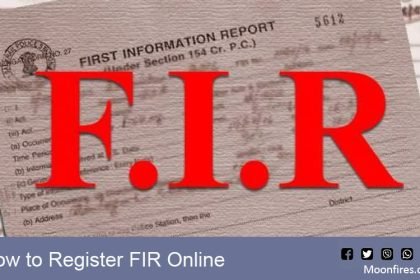Introduction to Voter Registration in India
Voter registration in India holds immense significance as it forms the cornerstone of the democratic process. Being a registered voter is not just a right but also a fundamental duty of every eligible citizen, as enshrined in the Indian Constitution. The right to vote empowers citizens to influence the governance and decision-making processes of the country, thereby ensuring that their voices are heard and represented. The Election Commission of India (ECI) plays a pivotal role in overseeing the entire voter registration process, ensuring its integrity, transparency, and efficiency.
The ECI, an autonomous constitutional authority, is tasked with administering election processes in India at both national and state levels. One of its primary responsibilities is to maintain an accurate and updated electoral roll, which is crucial for the smooth conduct of elections. The voter registration process is designed to be inclusive, accessible, and straightforward, ensuring that all eligible citizens can exercise their right to vote.
Eligibility for voter registration in India is determined by specific criteria. Firstly, an individual must be an Indian citizen. Secondly, the individual must be at least 18 years old on the qualifying date, which is typically January 1st of the year in which the revision of the electoral roll is being undertaken. Additionally, the individual must be a resident of the constituency in which they wish to register. This residency requirement ensures that voters are registered in the correct electoral district, thereby upholding the principle of fair representation.
Understanding and participating in the voter registration process is an essential aspect of civic engagement and responsibility. By ensuring that they are registered, citizens can actively contribute to the democratic process and the overall governance of the country. The subsequent sections of this guide will delve deeper into the specifics of how to register, the documents required, and the various modes through which one can complete the voter registration process.
Steps to Register as a Voter
Registering as a voter in India is a crucial step in participating in the democratic process. There are several methods available to facilitate voter registration, each catering to different needs and preferences. One of the most convenient methods is through the National Voter’s Service Portal (NVSP). This online platform allows eligible citizens to register from the comfort of their homes. To begin the process, visit the NVSP website, create an account, and fill out Form 6, which is the application for inclusion of a name in the electoral roll. Ensure that you have scanned copies of the necessary documents, including proof of identity, address, and age, ready for upload.
For those who prefer offline registration, Form 6 can be obtained from designated centers such as Electoral Registration Offices (EROs), Booth Level Officers (BLOs), and Common Service Centers (CSCs). Once the form is filled out, it should be submitted along with photocopies of the required documents. The documents typically include a government-issued ID (like an Aadhaar card or passport), proof of residence (such as a utility bill or rental agreement), and proof of age (birth certificate or school leaving certificate).
Additionally, special voter registration drives are frequently organized, particularly before elections, to facilitate the registration process. These drives are conducted at various public venues, including educational institutions and community centers, where eligible citizens can register on the spot. During these drives, officials are available to assist with filling out forms and verifying documents, making the process more accessible and efficient.
Once the application form is submitted, whether online or offline, it undergoes verification by the electoral authorities. Applicants may be contacted for further clarification or to provide additional documents if necessary. Upon successful verification, the applicant’s name is included in the electoral roll, and they will receive their voter ID card, which is the official document confirming their registration as a voter.
Verification and Inclusion in the Electoral Roll
Once an individual submits the voter registration application, the Election Commission of India undertakes a thorough verification process to ensure the accuracy and authenticity of the provided details. This verification procedure is crucial for maintaining the integrity of the electoral roll.
The verification process typically begins with field verification conducted by a Booth Level Officer (BLO). The BLO visits the applicant’s residence to verify the information provided in the application form, including name, age, and address. This step ensures that only eligible citizens are included in the electoral roll. The BLO may also seek supporting documents, such as proof of age and residence, to substantiate the details mentioned in the application.
In addition to field verification, the Election Commission may employ other authorities to cross-check the applicant’s information. This multi-layered approach helps prevent any discrepancies and maintains the accuracy of the electoral roll. The verification timeline varies, but it generally takes a few weeks from the date of submission. During this period, the applicant’s details are scrutinized, and any inconsistencies are addressed.
After successful verification, the applicant’s name is included in the updated electoral roll. The Election Commission periodically updates the electoral roll to reflect new registrations and remove ineligible entries, ensuring its accuracy and relevance. Applicants can check the status of their voter registration application online through the National Voters’ Service Portal (NVSP) or the respective State Election Commission websites. These platforms provide real-time updates on the application status, offering transparency and convenience to the applicants.
Upon successful inclusion in the electoral roll, the Elector Photo Identity Card (EPIC) is issued to the registered voter. The EPIC, commonly known as the Voter ID card, serves as a crucial identification document for casting votes in elections. It contains essential information, including the voter’s name, photograph, and unique identification number, ensuring a seamless voting experience.
Common Issues and How to Resolve Them
Applicants often encounter several challenges during the voter registration process in India. One frequent issue is discrepancies in the application form. To avoid this, ensure that all mandatory fields are accurately filled out, and double-check the information before submission. If discrepancies are found after submission, applicants should promptly contact their local Electoral Registration Officer (ERO) for rectification.
Another common problem is rejected applications. Rejection can occur due to incomplete forms, incorrect information, or failure to meet eligibility criteria. If an application is rejected, the applicant will receive a notification explaining the reason. To resolve this, carefully review the feedback, correct any mistakes, and resubmit the application. It is also helpful to consult the ERO for guidance on addressing specific issues.
Errors in the Electoral Roll, such as incorrect names, addresses, or other personal details, can cause significant inconvenience. To correct such errors, applicants should fill out and submit Form 8 (Application for Correction of Entries in Electoral Roll) either online through the National Voter Service Portal (NVSP) or offline at the nearest ERO office. The revised details will be updated after verification.
Transferring voter registration to a new constituency is another common requirement. This can be done by submitting Form 6 (Application for Inclusion of Name in Electoral Roll) along with proof of new residence. This form can also be submitted on the NVSP website or at the ERO office in the new constituency.
For Indian citizens residing abroad, registering as an overseas voter is essential to participate in elections. Overseas voters need to fill out Form 6A (Application for Inclusion of Name in Electoral Roll by an Overseas Elector) and submit it with relevant documents either online or at the Indian consulate in their country of residence.
To assist applicants with any queries or issues, the Election Commission of India provides several helplines and support centers. Applicants can call the Voter Helpline at 1950 or visit the NVSP website for additional support. Local ERO offices are also available for in-person assistance.
How to Register FIR Online0 (0)







 If you want to use your preferred UPI app, our UPI ID is raj0nly@UPI (you can also scan the QR Code below to make a payment to this ID.
If you want to use your preferred UPI app, our UPI ID is raj0nly@UPI (you can also scan the QR Code below to make a payment to this ID.






